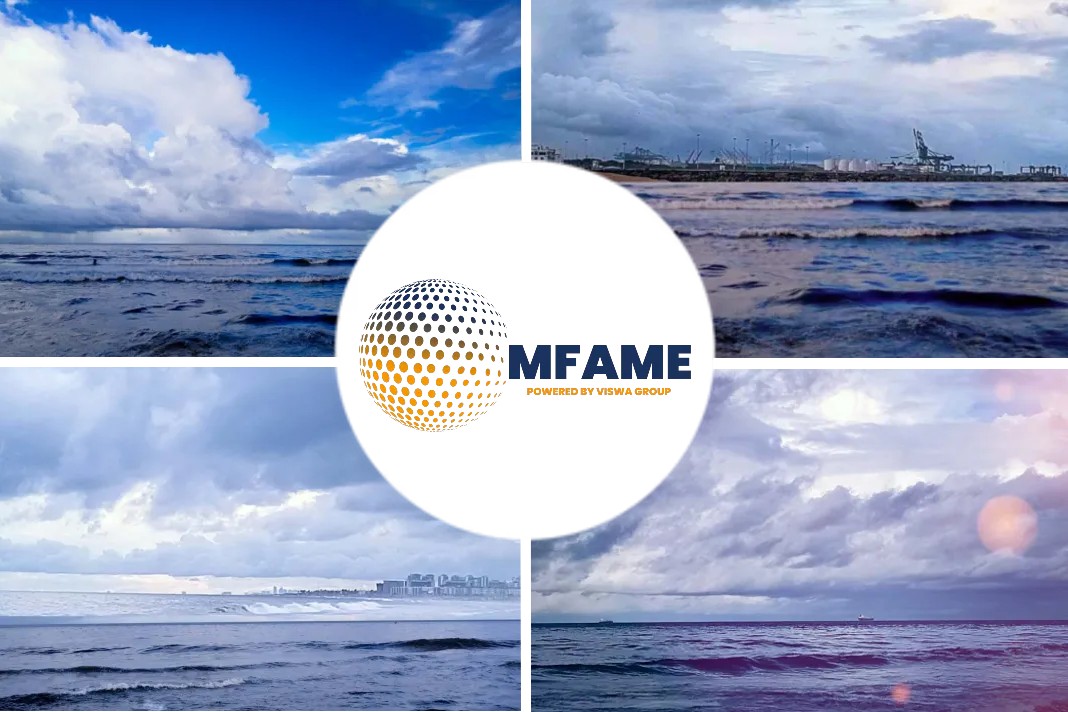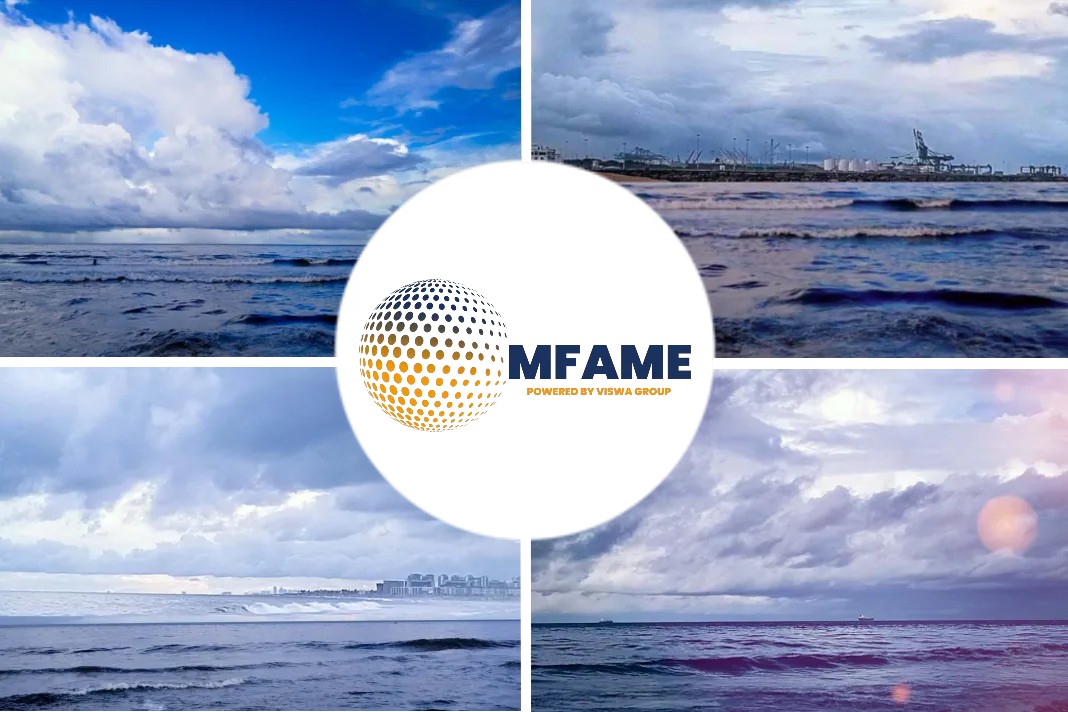Scientists warn that, by 2050, the quantity of plastics in the oceans will outweigh fish. IMO and others adopted an Action Plan to address marine plastic litter from ships and the same is published in the website.
‘Marine litter’ presents a huge problem in our oceans, and IMO and others have been taking action to address the problem, including regulating the discharge of garbage from ships and supporting research work.
What is marine litter and what is its source?
Plastic materials in all shapes and sizes are pervasive in our seas and oceans. They break down extremely slowly in the marine environment, taking in excess of 400 years. Marine litter originates from many sources and causes a wide spectrum of environmental, economic, safety, health and cultural impacts. For example, marine litter can cause harm to sealife if ingested or even death if a marine mammal becomes entangled in litter.
Marine litter has been defined by UN Environment as “any persistent, manufactured or processed solid material discarded, disposed of or abandoned in the marine and coastal environment. Marine litter consists of items that have been made or used by people and deliberately discarded into the sea or rivers or on beaches; brought indirectly to the sea with rivers, sewage, storm water or winds; accidentally lost, including material lost at sea in bad weather (fishing gear, cargo); or deliberately left by people on beaches and shores.”
Marine litter, including plastics and microplastics, is known to result from land-based sources in massive quantities but can also originate from ships. Debris has been observed in coastal areas, in waters far from anthropogenic pollution sources, in surface waters, in the water column of deep water and in ocean sediments, and from the equator to the poles, including trapped in sea ice.
UN Environment estimates that 15% of marine litter floats on the sea’s surface, 15% remains in the water column and 70% rests on the seabed.
Plastic pollution
According to another study, 5.25 million plastic particles, weighing 268,940 tonnes in total, are currently floating in the world’s oceans.
“Plastic pollution is a defining challenge of our times. Single-use throwaway plastics are the biggest contributor every year, millions of plastic bags end up in the environment, thus polluting soil, water bodies, rivers oceans.”
Dangers caused by marine litter
Apart from the environmental and health problems posed by marine litter, floating garbage and plastics pose a costly as well as dangerous problem for shipping, as they can be a navigational hazard and become entangled in propellers and rudders.
Another problem requiring urgent remedial action is the massive accumulation of plastics, not only in coastal areas but also in the deep sea.
This litter is harmful to marine life: sea creatures can become trapped inside containers or strangled by nets or ropes, and microplastics can also enter the food chain as they are indigestible when swallowed.
Microplastics a risk for food safety too?
Microplastics are tiny pieces of plastic or fibres, resulting from the fragmentation of larger plastic items when exposed to sunlight, are increasingly found in the oceans. They may also be purposefully manufactured for particular industrial or domestic applications.
One example is in facial cleansers and body scrubs. It has been estimated that a single shower can result in 100,000 plastic particles entering the ocean.
Microplastics have been found distributed throughout the world’s oceans, on shorelines, in surface waters and seabed sediments, from the Arctic to Antarctic. They may accumulate at remote locations such as mid-ocean gyres, as well as close to population centres and shipping routes.
Fish and shellfish ingest microplastics and they have been found in a variety of commercial fish and shellfish in retail outlets. Further research is needed in order to determine how and if microplastics pose a risk for food safety and potentially food security.
GESAMP investigation and report
The good news is that several governments have announced plans to ban microbeads in cleaning products and cosmetics, such as exfoliating facial and body scrubs, and a number of cosmetic companies have already made voluntary commitments to phase them out by 2020.
Microplastics have come to the attention of the Joint Group of Experts on Scientific Aspects of Marine Environmental Protection (GESAMP), which is an advisory body of the United Nations, for which IMO fulfils Secretariat functions.
The GESAMP working group on microplastics has produced two reports. The second microplastics report, published in January 2017, investigates the sources and fate and potential ecological impacts of microplastics and gives recommendations for further work.
IMO’s part in regulating marine litter
IMO pioneered the prohibition of plastics’ disposal from ships anywhere at sea almost 30 years ago. MARPOL Annex V prohibits the discharge of all types of garbage into the sea from ships, except in the cases explicitly permitted under the Annex (such as food waste, cargo residues, cleaning agents/additives that are not harmful to the marine environment).
 Garbage includes all kinds of food, domestic and operational waste, all plastics, cargo residues, incinerator ashes, cooking oil, fishing gear, and animal carcasses generated during the normal operation of the ship and liable to be disposed of continuously or periodically.
Garbage includes all kinds of food, domestic and operational waste, all plastics, cargo residues, incinerator ashes, cooking oil, fishing gear, and animal carcasses generated during the normal operation of the ship and liable to be disposed of continuously or periodically.
The regulations for the prevention of pollution by garbage from ships entered into force internationally in 1988. Today, more than 150 countries have signed up to MARPOL Annex V.
MARPOL Annex V applies to all ships, which means all vessels of any type whatsoever operating in the marine environment. MARPOL Annex V recognizes that some sea areas require higher degrees of protection and can be designated as Special Areas under MARPOL.
Currently, there are eight Special Areas designated under Annex V: the Mediterranean Sea, the Baltic Sea, the Black Sea, the Red Sea, the “Gulfs” areas, the North Sea, the Wider Caribbean region including the Gulf of Mexico and the Caribbean Sea, and the Antarctic area.
All of these have entered into effect, except the Black Sea and the Red Sea (due to no receipt of sufficient notifications on adequate reception facilities).
Placards and record books
Ships (12 metres or more in length) and fixed or floating platforms are required to display placards which notify the crew and passengers of the discharge requirements.
Ships (100 gross tonnage and above) or those carrying 15 or more persons and fixed or floating platforms must carry a garbage management plan which the crew should follow.
Larger ships (400 gross tonnage and above) or those carrying 15 or more persons must keep a Garbage Record book, to record every permitted discharge into the sea or to a reception facility, competed incinerations and so on.
Port reception facilities
The effectiveness of ships to comply with the discharge requirements of MARPOL depends largely upon the availability of adequate port reception facilities, especially within special areas. Hence, the Annex also obliges Governments to ensure the provision of adequate reception facilities at ports and terminals for the reception of garbage without causing undue delay to ships, and according to the needs of the ships using them.
Global Partnership on Marine Litter
IMO is one of the partners in the Global Partnership on Marine Litter (GPML), which is managed by UN Environment, with IMO co-leading on sea-based sources of marine litter together with the Food and Agricultural Organization (FAO).
Under this partnership, several activities have been undertaken, including the development of a training package on MARPOL Annex V and port reception facilities and a review of plastics in the waste streams under the London Convention and Protocol.
IMO has contributed to the development of the Massive Open Online Course (MOOC) on Marine Litter. The MOOC has been created in order to stimulate leadership and offers opportunities for actionable and change oriented learning related to marine litter.
Dumping of wastes at sea
The dumping of wastes at sea is regulated by the 1972 Convention on the Prevention of Marine Pollution by Dumping of Wastes and Other Matter, commonly called the London Convention, and its 1996 Protocol. Under the 1996 Protocol, it is prohibited to dump wastes at sea from ships or aircraft, except for those on a permitted list, for which a special permit may be sought, and only as after a careful assessment of other disposal options and potential impacts.
The list of possibly allowed wastes includes dredged material, sewage sludge, fishing wastes, inert inorganic geological material, organic material of natural origin and carbon dioxide streams from carbon capture and storage projects. Any such waste must be thoroughly assessed before a permit is given.
IMO performs the Secretariat functions for the London Convention and Protocol.
The Contracting Parties have completed a review of the state of knowledge with respect to how the dumping of wastes may contribute to the presence of marine litter, in particular plastics, in the marine environment. Dredged materials and sewage sludge are thought to be the most likely of the waste streams to contribute to the presence of marine litter.
In 2016, the Contracting Parties, acknowledged the significant quantity of marine litter entering the ocean and the severe and long-lasting threat it poses to the marine environment, and adopted a recommendation to encourage action to combat marine litter. The Parties also noted the problem of abandoned fibreglass vessels in the marine environment, and agreed to investigate the issue further.
Regulation of Ship recycling
When a ship itself reaches its end of life, almost every part of a ship can be recycled – steel, machinery, equipment, fittings and furniture. Virtually nothing goes to waste and the materials and equipment are almost entirely reused and recycled. Moreover, ship recycling provides direct and secondary employment for thousands of workers, both in the industry itself and in the ancillary markets for materials and components, particularly in the five countries where most of the world’s ship recycling is carried out today – Bangladesh, China, India, Pakistan and Turkey.
IMO has embraced the regulation of ship recycling – not only for ships, but also for land-based recycling facilities – into a single, comprehensive instrument. The International Convention on the Safe and Environmentally Sound Recycling of Ships, the so-called Hong Kong Convention, was adopted in 2009.
The Convention embraces the “cradle to grave” concept for the purpose of addressing all environmental and safety aspects relating to ship recycling, taking them into account from the ship design stage onwards and right through to the end of the ship’s life, and including also the responsible management and disposal of associated waste streams in a safe and environmentally sound manner.
The Hong Kong Convention
When the Hong Kong Convention enters into force, it will provide inclusive and effective standards that can be applied universally. It places responsibilities and obligations on all parties concerned – shipowners, ship building yards, ship recycling facilities, flag States, port States, recycling States, etc. The Convention, the first ever to address ship recycling issues, is aimed at ensuring that ships, when being recycled after reaching the end of their operational lives, do not pose any unnecessary risk to human health and safety or to the environment.
IMO is currently raising awareness of the Convention internationally and in particular is working with recycling countries, to help build the capacity and establish the conditions that will enable them to ratify/accede to the Hong Kong Convention.
Disclaimer: This video is intended for informational purpose only. This may not be construed as a news item or advice of any sort. Please consult the experts in that field for the authenticity of the presentations.
Did you subscribe for our daily newsletter?
It’s Free! Click here to Subscribe!
Source: IMO
























